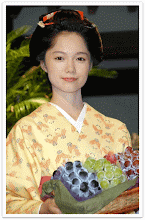For an outsider, Japan’s national anthem can be easily distinguished apart from anthems of other nations in both it’s origins an overall tone. If you are unfamiliar with the Kimigayo and are likely hearing it for the first time while watching the World Cup. The first thing you will notice is both its shortness and almost melancholy sound. When compared to say the proud or upbeat anthems of United States or Germany, The Japanese national anthem seems to be in another league all to its own. But this is just a first impression and not a lasting one. As I watch the Japanese National Team the Samurai Blue, I am reminded of when I stood next to a Japanese woman in San Francisco who sang the Kimigayo as it was played to honor the crew of the Kaiwo Maru last May. Up until that time I had never heard it sung before. It was sung with such emotion I was rather moved by its rendition which left me wanting to know its meaning.
So I sought ought to understand the Kimigayo’s haunting melody and in the process became drawn to its meaning. But to do this you must first understand its origin and history. The Kimigayo was based on a waka poem from the Heian period of Japan (794-1185). It became Japan’s national anthem during Emperor Meji’s reign in 1868 and used until 1945. This period from Meji to the catastrophic defeat in WWII was known as the Imperial Period. Despite calls of post-war connotations to Japanese Imperialism, it remained Japan’s national anthem. The word Kimi in Kimigayo is said to have referred to the nation’s former sovereign that being the emperor. But this has changed since the induction of what can be called the democratic period where the emperor is merely a symbol of the unity of Japan hence the Kimigayo is no longer the sole domain of it’s former sovereign, but rather it is part of it’s overall national identity of Japan itself.
The Kimigayo translated reads like this:
きみがよは Kimigayo wa May your reign
ちよにやちよに Chiyo ni yachiyo ni Continue for a thousand, eight thousand generations,
さざれいしの Sazare-ishi no Until the pebbles
いわおとなりて Iwao to narite Grow into boulders
こけのむすまで Koke no musu made Lush with moss.
There are other variations as to the translation of the Kimigayo but I like this translation the most. Understanding this, I no longer hear the words of a defeated people or sadness I once misunderstood. Instead, I now feel a deep sense of pride of a most ancient honorable people who have come a long way since this was first sung in Meji’s day. Of course there will always be detractors out there who will dismiss all of this so they can argue about the Second World War. I say to them that is another argument best left out of modern sporting events and when the Rising Sun waves in the breeze. The Showa Era is over and Japan has made significant strides forward while retaining the Kimigayo. Its beauty and nobility can not be denied nor should it ever be discarded. It should continue on as the national anthem. The Kimigayo is indeed the oldest and shortest anthems in the world but for those who understand it, one of the proudest anthems that reflect both a people and a nation that will continue to flourish under the Rising Sun.
Aya Matsuura Singing The Kimigayo for the Samurai Blue
Tuesday, June 22, 2010
Subscribe to:
Post Comments (Atom)






















No comments:
Post a Comment